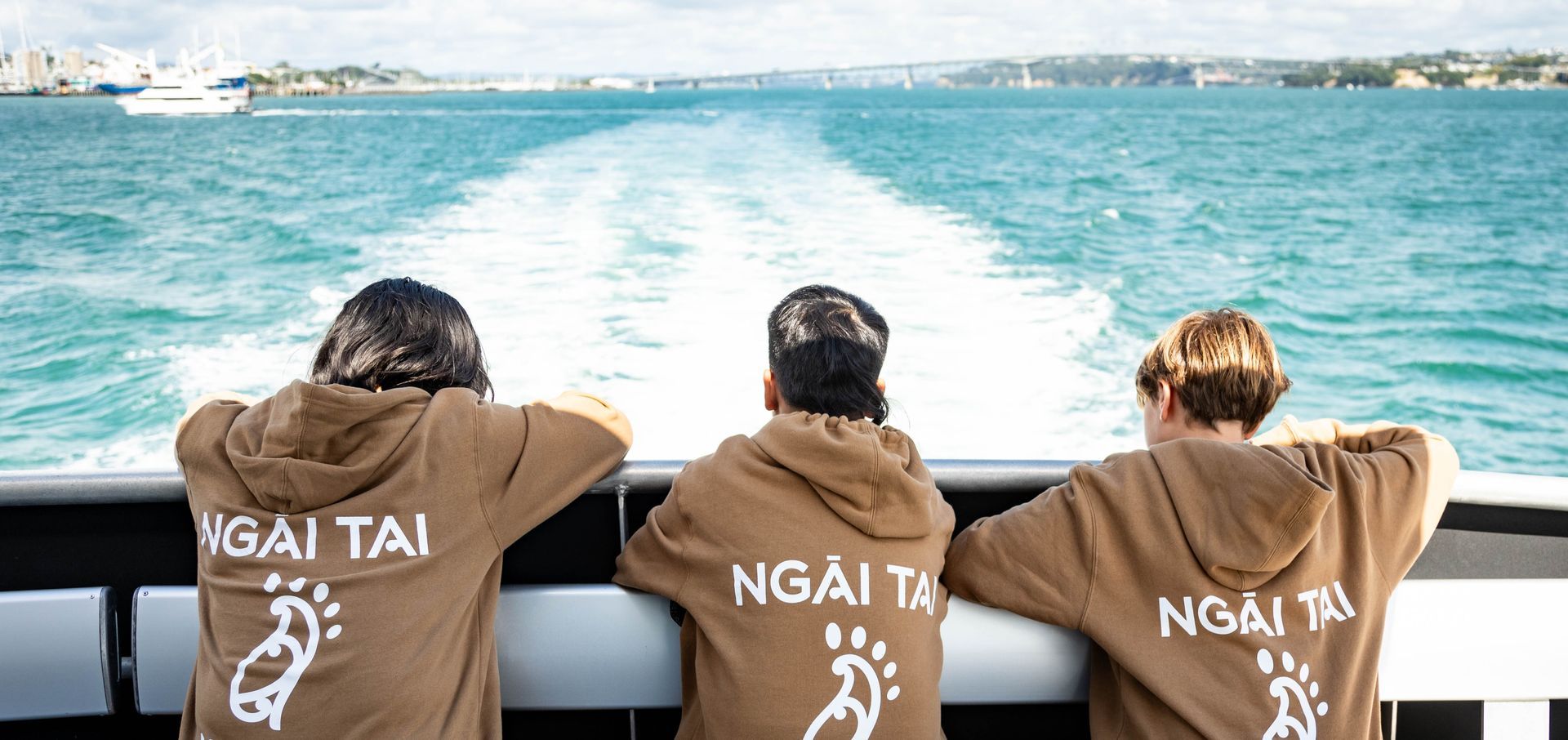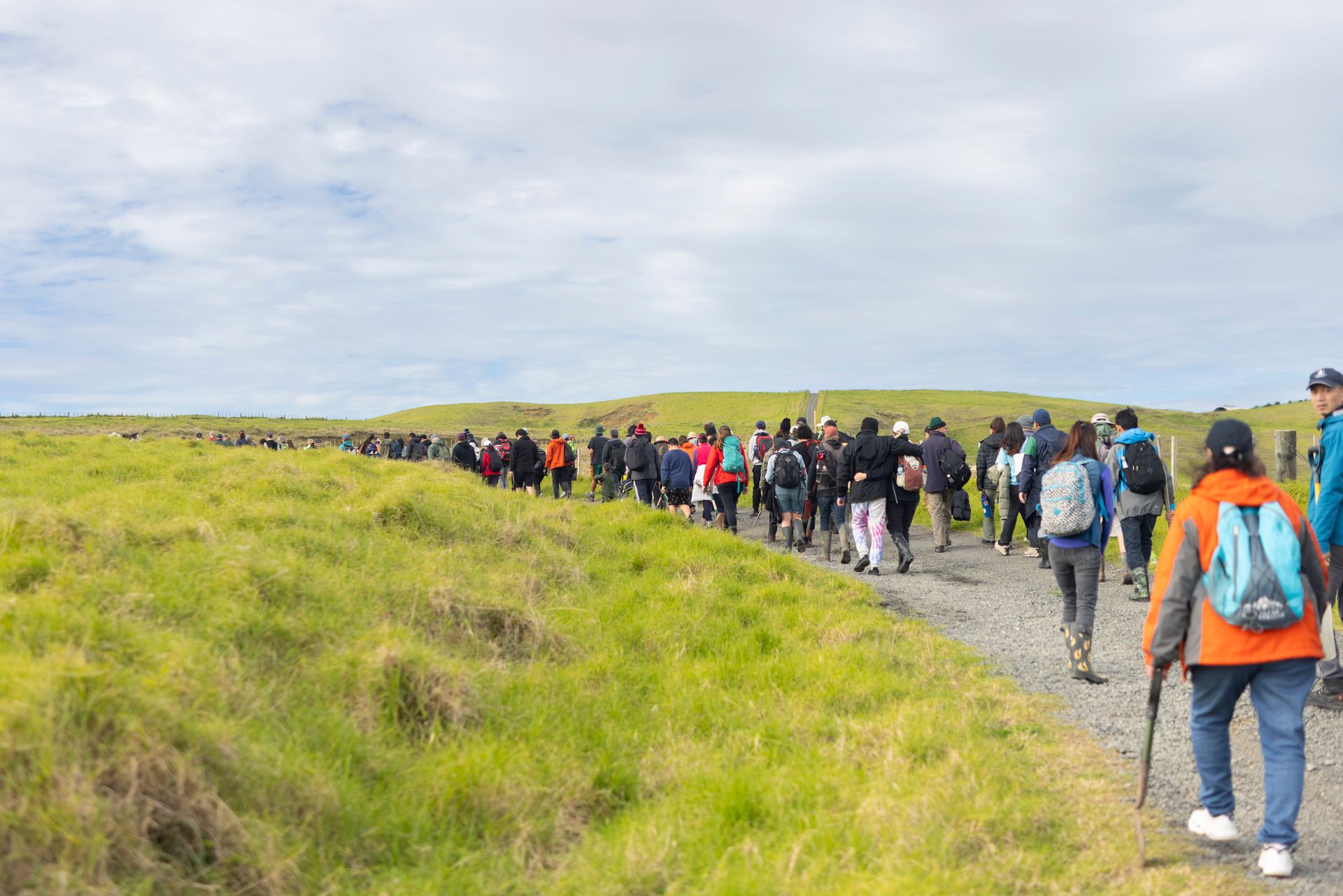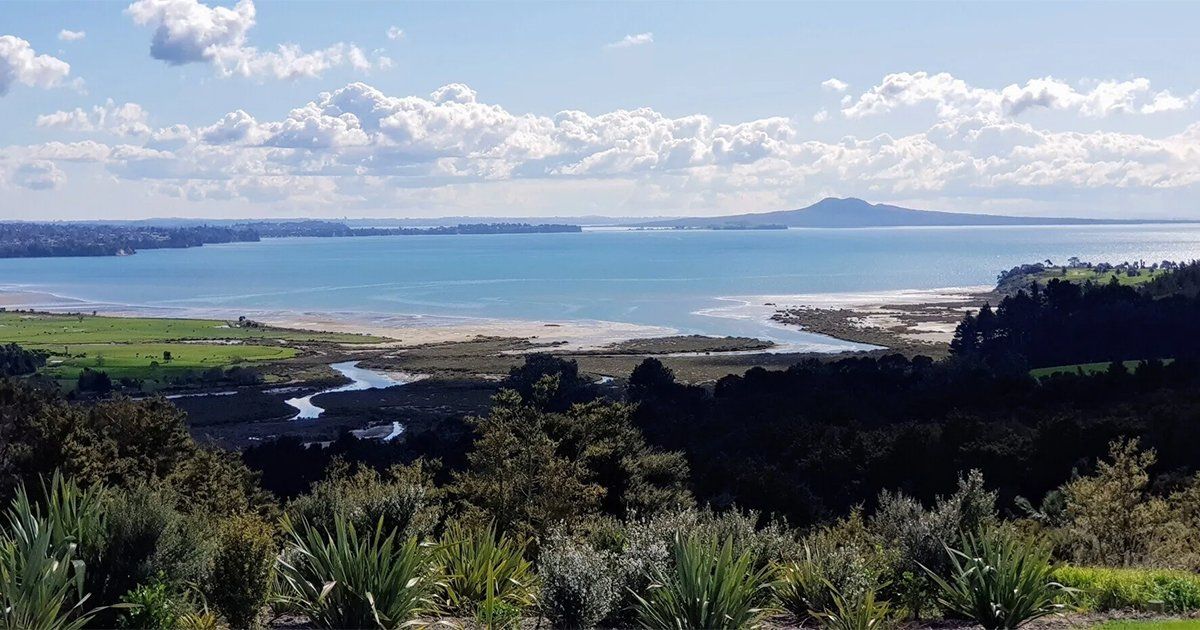
Exotic Caulerpa
Cover image: Live tipa (scallops) infested with exotic Caulerpa in Okupu/Blind Bay. Richie Hughes, NIWA. https://creativecommons.org/licenses/by-nc-nd/4.0/
What is exotic Caulerpa, and why does Ngāi Tai ki Tāmaki care about it?
Exotic Caulerpa is an invasive seaweed that colonises the seabed by forming large, dense mats that will kill our native seaweeds that many of our marine species feed off, such as like tāmure and kōura.
Exotic Caulerpa has been found at Aotea/Great Barrier Island (July 2021), Ahuahu/Great Mercury Island (March 2022), Te Rāwhiti, Bay of Islands (May 2023), Kawau Island (July 2023) and Waiheke Island (mid2023).
Ngāi Tai ki Tāmaki are joining the fight against the invasive seaweed and have proactively conducted two surveys with the help of Revive Our Gulf and Coast and Catchment.
Surveying our rohe
We first conducted a survey around The Noises (Motuhoropapa, Ōtata, Ahaaha Rocks, David Rocks, and Maria Island) and the north-eastern section of Rākino on the 25th of August. We analysed the footage and thankfully did not spot any exotic Caulerpa. Hūrō!
The second survey we conducted was around the West and East side of Rātōroa and the North and East side of Te Pounui a Peretū (Pōnui Island) on the 16th of November. Ngāi Tai ki Tāmaki analysed the footage and again did not spot any exotic Caulerpa.
While we are relieved that we haven’t seen any trace of exotic Caulerpa in our survey areas, we will continue to look out for the invasive species and encourage everyone to be aware of the threat this exotic seaweed poses and to assist us in our efforts to limit its spread.
How you can help
Here are some simple steps you can take to help in the fight against exotic Caulerpa if you're out on the water this summer:
- When at sea, before moving to a new location, check your vessel’s anchor, anchor chain, and any other gear which may have come into contact with exotic Caulerpa (e.g fishing line and hooks, dive equipment etc.)
- If you find any exotic seaweed attached – remove it, bag it or contain it securely so it can't get back into the water, then take it back ashore for disposal in a rubbish bin.
Please be aware that Aotearoa has its own native species of Caulerpa (C. articulata and C. brownie) however their appearance is very different from the exotic species. This fact sheet from MPI shows the difference between the native and exotic species:
More information
- Ngāti Manuhiri - Te Wero Nui - https://www.ngatimanuhiri.iwi.nz/teweronui
- Revive Our Gulf - Exotic Caulerpa Response - https://www.reviveourgulf.org.nz/project/exotic-caulerpa-response/
- Ministry for Primary Industries - Exotic Caulerpa seaweeds in New Zealand - https://www.mpi.govt.nz/biosecurity/exotic-pests-and-diseases-in-new-zealand/pests-and-diseases-under-response/exotic-caulerpa-seaweeds-caulerpa-brachypus-and-caulerpa-parvifolia-in-new-zealand/
- NIWA - Marine invader Caulerpa triggers biosecurity response -
https://niwa.co.nz/news/marine-invader-caulerpa-triggers-biosecurity-response




